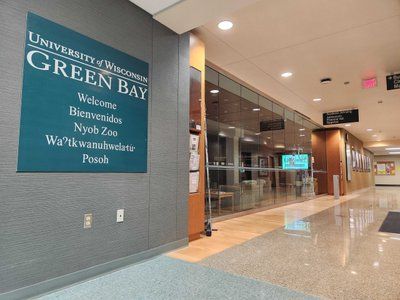By Tom Still
A century or so ago, the development of a reliable farm-to-market road system helped grow Wisconsin’s agricultural economy by making it possible to move perishable goods much faster. That was followed in the 1930s by “rural electrification,” or the widespread availability of electric power to parts of Wisconsin that were living, quite literally, in the dark.
Both are examples of how advances in infrastructure – a fancy word for basic facilities, services and installations – helped transform rural Wisconsin in the past.
The next frontier is most likely expanded access to broadband service, a 21st century equivalent to roads and electricity in terms of fostering Wisconsin’s connections in a wired world.
That was the message last week at a meeting sponsored by LinkWISCONSIN and the state Public Service Commission of Wisconsin, which have spent more than two years taking stock of Wisconsin’s broadband capabilities and laying out strategies for how to move ahead.
First, a definition: Broadband is generally described as enough bandwidth, or high-speed Internet connectivity, to carry multiple voice, video or data channels simultaneously. That can be accomplished through fiber optic lines or through wireless networks.
Wisconsin ranks below average among the 50 states when it comes to high-speed Internet access, according to recent reports. A major reason for the state’s lackluster ranking is access in rural Wisconsin, where many telecom providers are trying to swap their historic commitment to land-line service to investments in broadband.
Much like other communities across the United States, rural Wisconsin would benefit from enhanced broadband connections. Here are some reasons why:
-
Broadband allows small businesses, which account for most new jobs in Wisconsin, to expand their markets and customer bases to regional, national and even international levels through greater use of eCommerce sales channels.
-
It fosters opportunities for creation of businesses related to information technology, one of the fastest-growing segments of the U.S. economy. Wisconsin is 21st among the states in information technology jobs, according to the latest CyberStates survey, and could grow even more in development of software, mobile applications and Internet solutions.
-
It enables hospitals and clinics to make better use of telemedicine. Examples include rapidly locating digital medical records and medical images that can be more easily transmitted to doctors or clinics in remote locations. This can save lives and improve health.
-
It provides rural Wisconsin residents with greater access to higher education or continued education through “distance learning” systems. These systems themselves can become an export industry for Wisconsin, which has a strong “K-through-gray” education structure and companies engaged in educational software. Why not sell that expertise to others?
-
It will enhance tourism. Wisconsin is a prime tourism destination, but some in the industry find themselves losing opportunities to book sales if their broadband service is slow or erratic. Tourists used to send postcards; today, they Tweet, post on Facebook or send an Instagram – and they want to stay connected, even if they’re on vacation.
-
It will enhance public safety by allowing more rapid response to emergencies, whether those are medical emergencies, police calls or events related to natural disasters.
All of those benefits and more were discussed during the conference, which represented more than two years of background work on broadband mapping, data analysis and input from consumers and providers alike.
Some next steps may be included in Gov. Scott Walker’s state budget bill, which will help remove some regulatory speed bumps and provide some money for public-private partnerships. Speaking Thursday at the conference, Walker called broadband access and capacity “a major economic development issue… Gaps in service are also gaps in opportunity.”
Reed Hall, the secretary and CEO of the Wisconsin Economic Development Corp. and the former executive director of the Marshfield Clinic, walked conference participants through the history of rural electrification and drew parallels to current efforts to expand broadband.
“People want to live and work where there is broadband service,” Hall said. “It improves the manner in which health care and many public services are delivered. For communities, it is a critical piece of infrastructure for attracting new capital investment as well as retaining existing businesses. Broadband service… has flattened the world by allowing businesses to communicate and collaborate in ways never before possible.”
Ultimately, of course, better broadband service will be driven by market forces. Will enough people pay for the service? In the meantime, however, public-private partnerships will help ensure that rural Wisconsin isn’t left behind.





